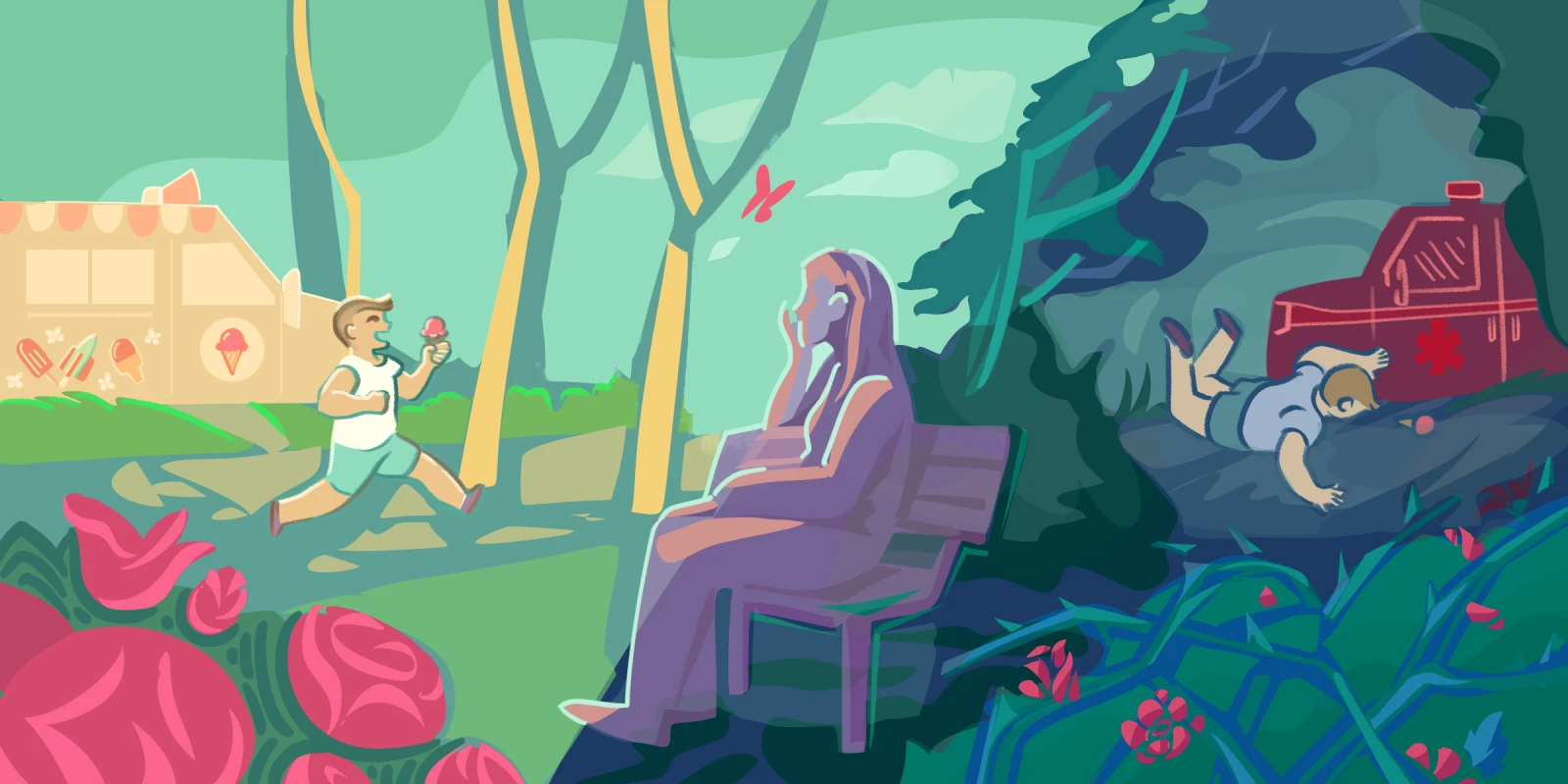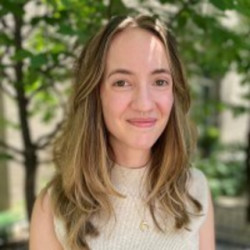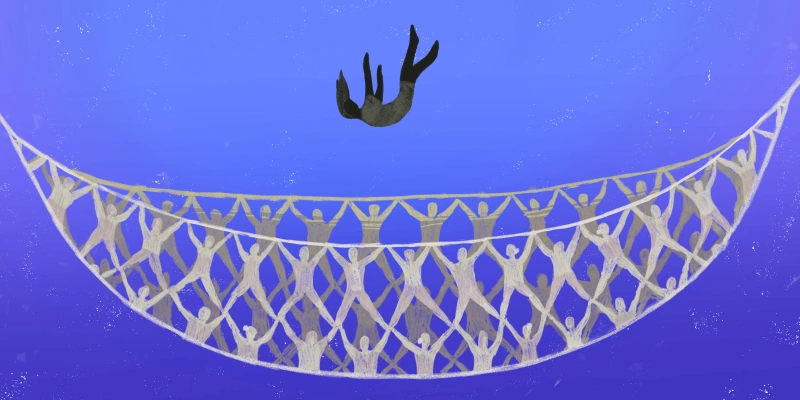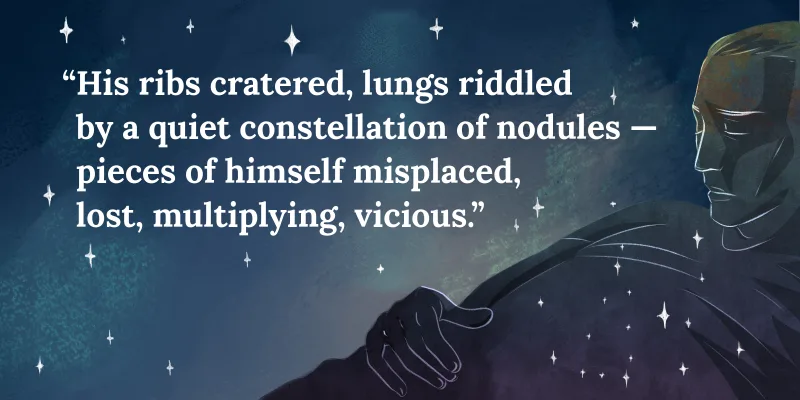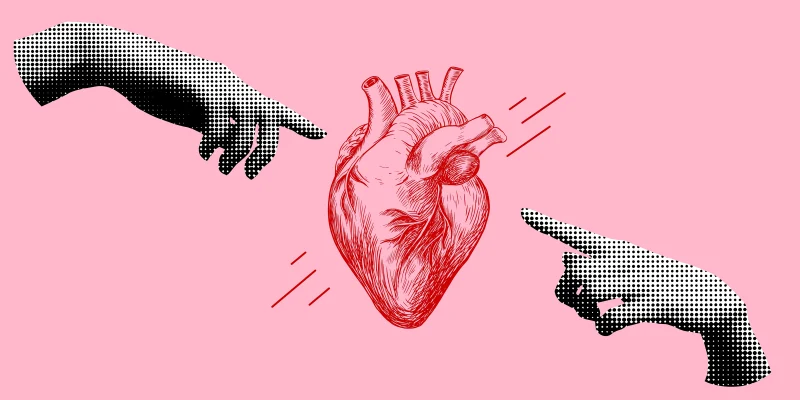I feel the most alive — the most human — the moment after a code ends.
Our patient was a young man, found unconscious and unresponsive in the bathroom of his workplace. EMS had been coding him prior to arrival, IVs already placed, multiple rounds of epinephrine already given. Our team had received the call from EMS and suited up, N95s and goggles on, blue plastic gowns donned. We waited by the ambulance bay doors for the patient to arrive with EMS, the quiet moment before organized chaos.
The resuscitation bay was brimming with people, all surrounding the patient we were trying to save. We’d been coding the patient for a long time now; he was so young we had a hard time stopping earlier. After many rounds of chest compressions and epinephrine, we asked if anyone had any other ideas, other medications we could try. Hoping someone might point out something, anything, we could do to bring the patient back. No one did.
Compressions cease. Time of death is called. We have a moment of silence.
I feel my heart pounding. My legs feel shaky. Surely someone can hear my heart pounding amid the blanket of silence in the room. My jaw is tight; the nerves I didn’t realize I was carrying have made me tense. Unknown downtime, unknown cause of death. I swallow hard as I leave the room. I don’t know how old he was, but he doesn’t seem older than me.
We are so very alive and some of us never realize it. I think about this contradiction quite often because that was me — alive but not aware.
Throughout college and medical school I played it very safe. I spent a lot of my time studying. I didn’t take risks. I prioritized sleep over late nights out with friends. I had a hard time being in the moment. It was difficult for me to sit down and simply enjoy being in the company of my friends and family. I felt guilty if I was relaxing, since it meant I wasn’t studying.
I first pronounced a patient dead a few months into my intern year while I was rotating in the medical ICU on night shift. My patient had just passed away with his nurse beside him — the yellow “DNR” flag in his medical record allowing his fragile body to rest. I remember how uncomfortable I felt all of a sudden; he looked so different. His eyes seemed waxy, his chest still and quiet. Only moments had passed, yet his body appeared empty. Something was missing; he was gone.
I began to see more death around me. I saw young patients with devastating metastatic cancer, now enrolled in clinical trials in the desperate hope that something, anything, might cure them. I saw the way that cancer had leached away their youth, their sharp bones and hard angles. I saw how their partners and parents took care of them even though they were wasting away inside, too.
As I became surrounded by more death and disease, my sense of personal safety began to erode. What makes me think that I will be safe, that no unfortunate accident will happen to me? We have no idea how close we are to being on the other side of tragedy. Just one moment away from a car accident, life-altering medical diagnosis, bike collision. It’s not just about safety; safety is an illusion. It’s about luck. Life is so delicate.
How do we process this? How do I process the knowledge that almost nothing separates me from the now-dead patient on the stretcher in the resuscitation bay?
Throughout intern year, I began to have worsening anxiety. Was I living my life to the fullest? Did those young patients with cancer and terrible car accidents and random unforeseen events have regrets? Did they live their lives the way they wanted to? Were they their truest selves? I knew I hadn’t been.
I began to make life changes — moves I hadn’t been able to before, back when I was playing it safe, worried about rocking the boat. Even so, at the same time, I became more cautious, more aware. We’ve seen too many tragedies not to be like this. Now, I never bike without a helmet (after treating a 24-year-old man, now paraplegic after a “bike versus car”), I drive slowly (31-year-old woman, traumatic arrest after MVA), I feel less safe in very crowded areas (28-year-old woman, traumatic arrest after being stabbed while on a mid-morning run). I share my location on my phone with my mother so someone always knows where I am. My siblings still make fun of me. They say I’m too careful, too overprotective — typical of an eldest daughter. And yet, I’m also the freest I’ve ever been. I’ve deepened my most meaningful relationships, kept up with my non-medical friends. I’ve become more open, more emotional, more vulnerable. I’ve come to realize and know the people and actions that are important to me.
This is the catch-22 of medicine. Once we see we aren’t any different than the patients in front of us, our eyes are opened. We’ve seen so much trauma we simultaneously want to live our boldest lives and be cautious and apprehensive. We are caught in an impasse between freedom and fear. The emergency medicine mindset for those we take care of — anyone, anytime, anywhere — applies to tragedy, too.
How has medicine shaped your perspective on life? Share your experiences in the comment section.
Dr. Halloran is an emergency medicine physician currently completing residency in Chicago. She works and writes at the intersection of health policy, inequality, and education, and her research and writing has been featured by the American College of Emergency Physicians and by Slate. She can be found on Twitter at @Diana_Halloran. Dr. Halloran is a 2022-2023 Doximity Op-Med Fellow.
Illustration by April Brust
